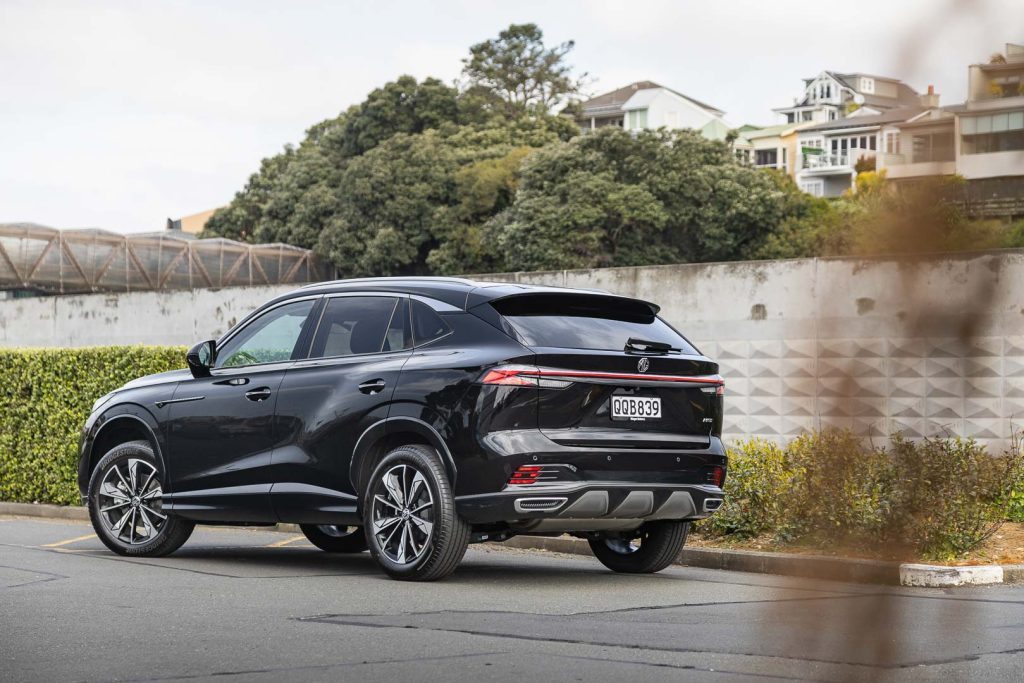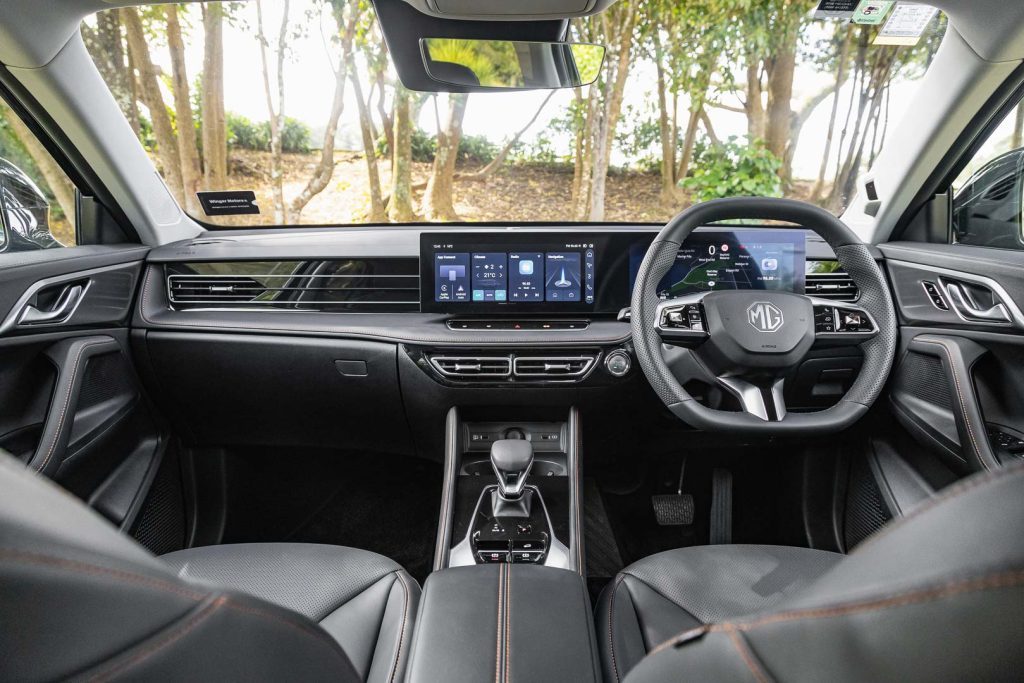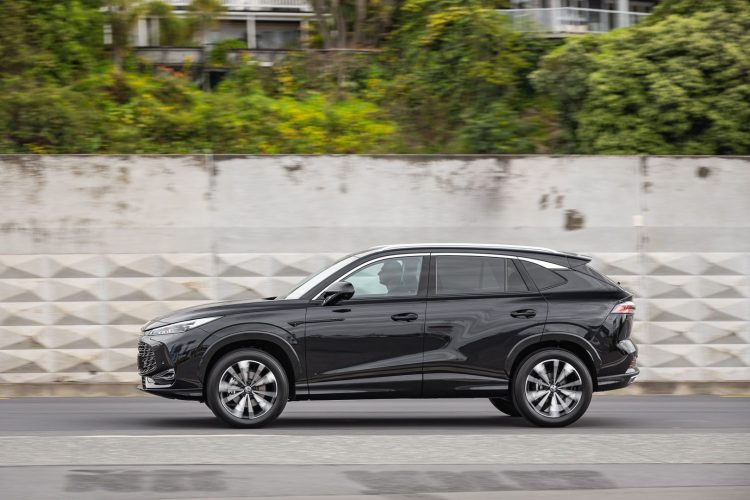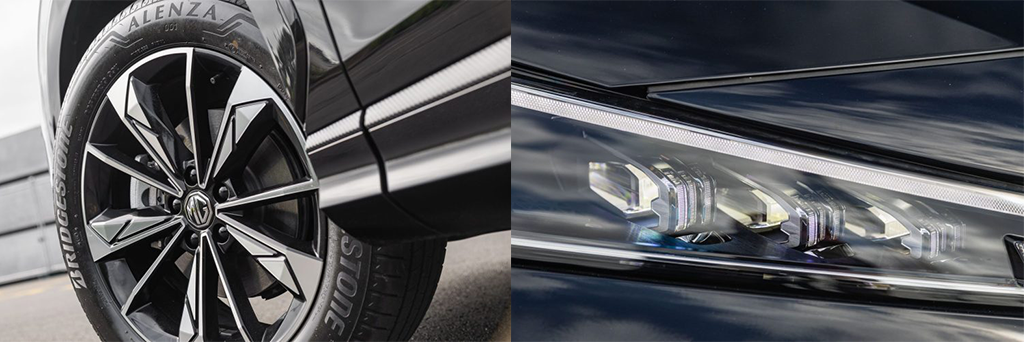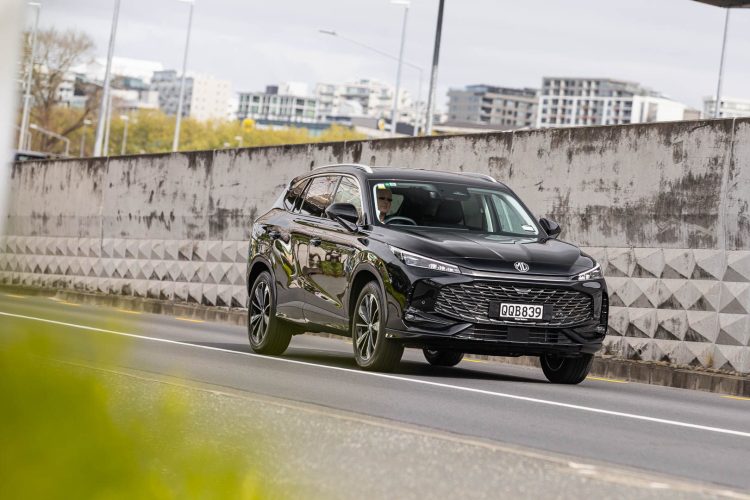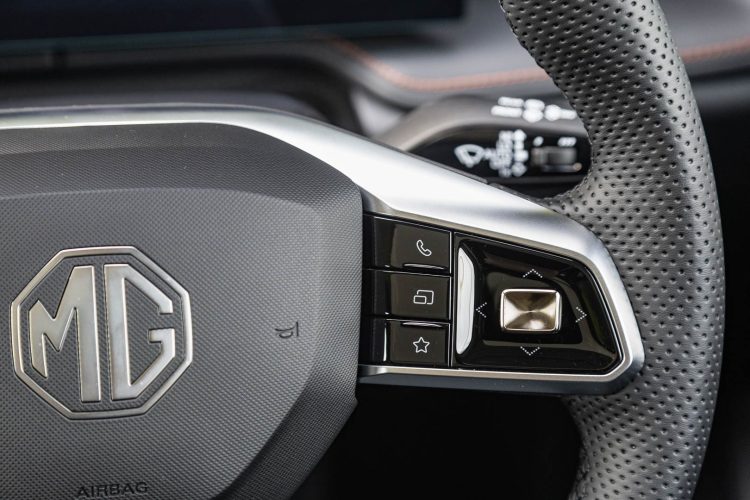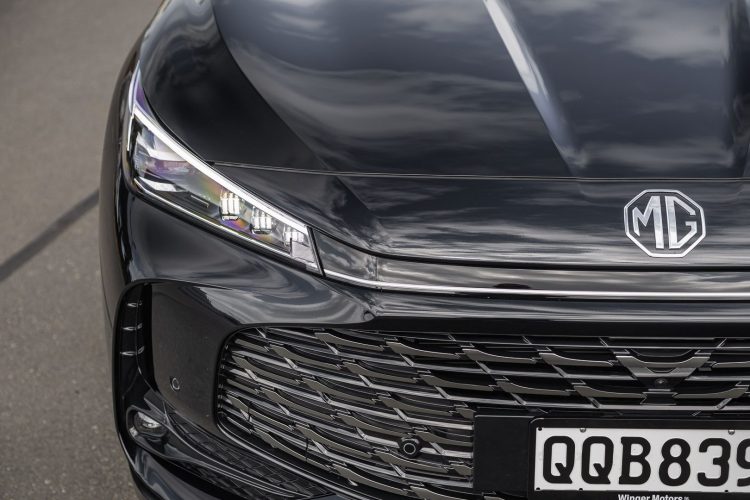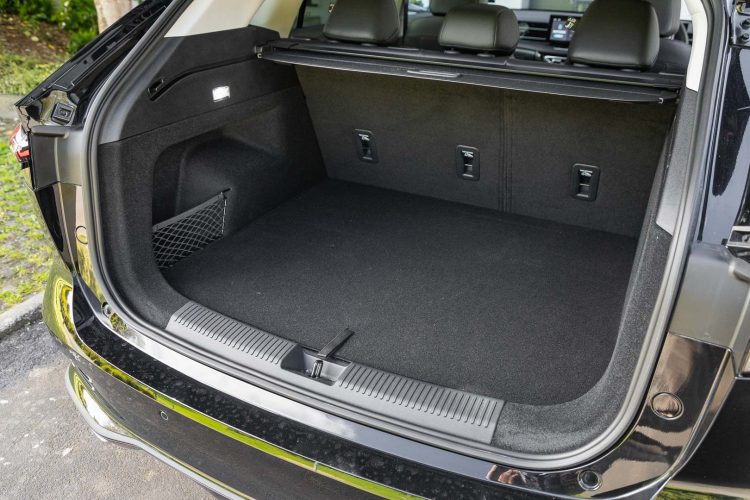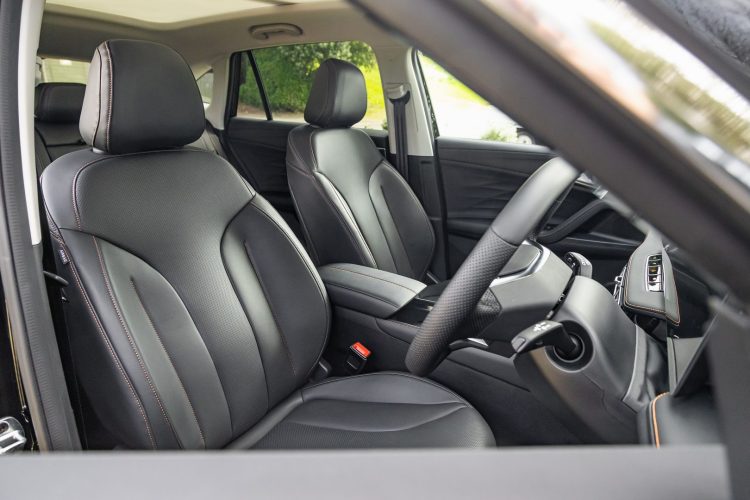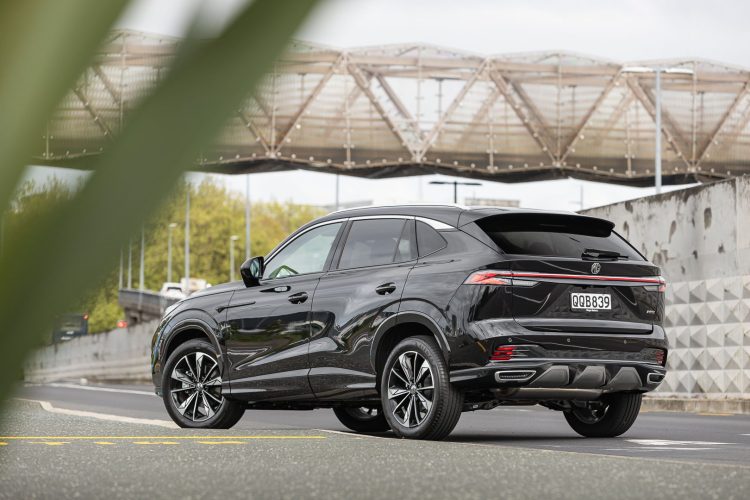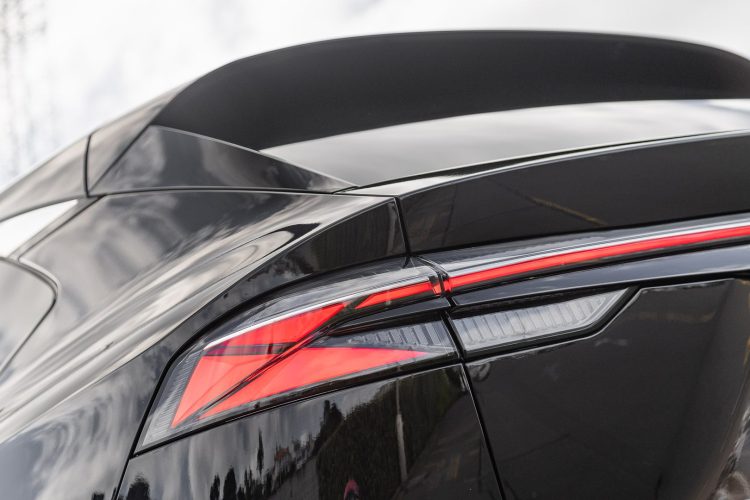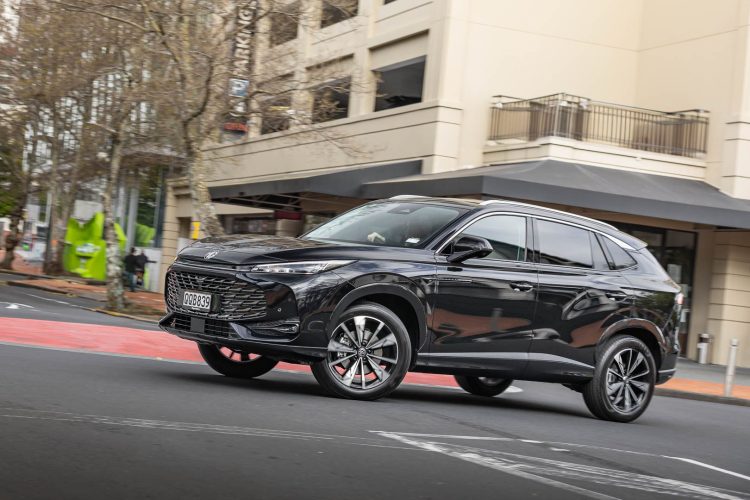2024 MG HS Essence review
MG has renewed its HS five-seat family car for the second generation. This Essence is bigger and smarter looking.

We rather liked the former MG HS in Excite mode when we tested it in 2020 and the latest second-generation model builds on that.
It may be ‘all new’ but you’d not mistake it for anything other than the latest HS, for the look is relatively similar. Only better proportioned, smoother. Up front is more purposeful with an MG3-esque grille and slim-line headlights.
At the rear is an LED lightbar and faux tail pipes emerge from the bumper. Also bogus are carbon fibre trim elements instead of flat black plastic mouldings.
We’ll take those any day as they don’t mark as easily. It’s a good look this.
Inside is familiar too. There are more soft plastics and piano black finishings.
Where once there was a three-part central screen it now has four, and where before ACC controls used to be hidden behind the wheel, they are now on the wheel for simplicity’s sake.
After pick-up I couldn’t work out why ACC wouldn’t activate. I’d have to say the handbook proved no help. And it wasn’t immediately obvious in the touchscreen either as system settings seemed to be missing.
Turns out I was using too much pressure to swipe the four-part central screen to the left. Pays not to be an animal. A gentle stroke is what’s required.
Anyway, it turns out ACC was turned off in the system settings! No wonder it wouldn’t go.
What models?
There are three distinct variants in the initial line-up, all with a turbopetrol powertrain. Hybrids are coming. So we have the MG HS Vibe, Excite and Essence, with the range kicking off at $36,990.
There’s a $3k boost in each model jump so this car, the range-topping Essence, goes for $42,990. Special features that the others don’t get include a panoramic sunroof, an eight-speaker audio system, heated front seats, dual-zone air, and wireless smartphone charging.
There are also powered seats with leather-like coverings up front and the driver’s seat moves in and out when entering and exiting the vehicle. Or not, depending on how you set it up.
It’s not like the Vibe is exactly threadbare either, with standard features like automatic LED headlights, 18-inch alloys, and a 12.3-inch Infotainment System.
This naturally has Apple CarPlay and Android Auto connectivity. Pay the extra $3000 for the Excite and you score 19-inch alloy wheels (as does the Essence), a 360-degree camera and the ability to control the air conditioner or heater via the MG iSmart app. We didn’t bother.
What's under the hood?
This is more expensive than it was four years ago but so is almost everything. Back then it went for the low to high 30s. Now it starts in the high 30s and ends in the low 40s, for what is essentially your garden variety good value family runabout.
So far it’s a petrol-only offering, the 1.5T engine developing a sniff more power and torque than it used to, out to 125kW and 275Nm (previously 124kW and 250Nm). Back then it was rated to hit 100 in just under 10 sec and now they reckon 9.6sec.
Back then, we achieved 9.7sec but this is actually a bit feistier. We got one run under 9sec, and two around 9.2sec. I’m guessing the test pilots for this vehicle didn’t bother dialing down the TC.
If you do, it gets off the line much better, scrabbling nicely for traction. Perhaps they hadn’t worked out how to swipe left to get into the settings screen!
What's with the bongs?
And on settings, MG had the opportunity to respond to customer (reviewer anyway) grievances about the annoying safety bongs of the first-generation HS. They chose not to, perhaps because of some safety legislation somewhere.
So this still bongs at you should you have the temerity to break the speed limit when road sign recognition is switched on. A four-step procedure allows you to switch off the audible warning, thankfully.
And then there’s just a visual flash to draw your attention to your wayward ways. Great, except each time you climb back into the car, it has reset so you must rinse and repeat. If it’s not that, it’s bonging at you to “Please focus on driving”.
That’s more persistent than the overspeed audible warnings. There’s a simple fix; just tape over the camera on the A pillar.
A warning lamp (a steaming cup of Joe) remains illuminated but that’s the last bong you hear from it. Just don’t nod off…
On the touchscreen upside, it’s easy enough to change radio and climate control settings. The screen is big and clear too, giving good 360-degree images at parking time.
Sometimes on hill starts the HS can try to run away on you before the clutch engages (dual-clutch system). Then you just pull to a stop and step on the gas pedal with a bit more gravity.
What's with versatility?
So this is a bit bigger all round than before, as is the usual way of succession models. Overall primary dimensions are 4655mm by 1890mm for width (+14mm), and 2765mm for wheelbase (+45mm).
The HS also rides lower by 30mm so that and the extra width help make it seem a bit more purposeful.
Much of the extra real estate seems to have ended up in the rear seat area, as added leg room. This has an almost flat floor in the back seat, making life in the middle seat slightly more pleasant.
Some of the extra went into the hold which grows by 44L to 507L before lowering the rear seats, when there’s 1484L of space. The powered fifth door works fine, quickly, quietly.
Up front, it’s a snip to enter which retirees will appreciate. Simply push the tab on the driver’s side door for central unlocking, slide in, and the electrics move the seat into your saved position.
At this point, it’s a good idea to hit the lumbar pump because it seems to deflate overnight.
The shift lever moves forward for reverse, pull it back for drive. There are no drive modes which is okay because this has plenty of low-end drive. It tends to upshift early, as turbo twin-clutch set-ups often do.
MG rates fuel use overall at 6.9L/100km which seems about right. We saw in the sixes on the motorway once we’d worked out how to activate cruise control, and it ran in the sevens about town.
That’s pretty reasonable for what is essentially a medium-sized crossover. And much of that can be attributed to the solid low-down pulling power of the engine. In the burbs, it’s often upshifting around the 2000rpm mark.
And even when you push on some in highway driving, it’s still not heading much beyond about 2500rpm. Towing should be a snip too, the braked rating being 1500kg.
How’s the practicality?
We put a fair swag of gear in the back of this, even without folding the rear seats away. On each side of the hold are a couple of netted bins, and inside the car are plenty of rubber-lined cubbies.
The Qi charger is well sited too, just in front of the centre bin. So unlike the Polestar we drove a week earlier, your cell phone isn’t launched into space by max acceleration.
Not that it probably would have, had it been the reverse way around.
How are ride and handling?
That’s simple enough. Average; not great, not bad. It rides a bit better than it handles. The steering doesn’t thrill. The HS rides on fixed suspension and it copes with general conditions just fine.
SUVs for families are ever thus. With this type of value-laden vehicle, that’s about all you can hope for. It’s certainly no MG4 on the handling front but then it isn’t rear-wheel drive either.
The HS is the best seller for MG, comprising one in every three sales globally. That’s because it’s in the most popular medium SUV sector.
If you’re after a hybrid, a similar sized RAV4 kicks off at almost $48k. Like-sized others such as Sportage and X-Trail are over $50k, though pure ICE models start at $40k, but aren’t as well equipped.
And none can match the 10-year/250,000km warranty MG offers.
So providing you can tolerate/circumvent the bongs from the MG Pilot safety arsenal, this stacks up as a decent value-led package.
Model
MG HS Essence
Price
$42,990
Engine
1496cc / IL6 / T / DI
Power
125kW@5000rpm
Torque
275Nm@3000-4000rpm
Drivetrain
7-speed twin-clutch / FWD
Fuel Use
6.9L/100km
C02 Output
131g/km
0-100km/h
9.15sec
80-120km/h
6.29sec (179m)
100-0km/h
36.42m
Stability systems
ABS, ESP
Safety
AEB, ACC, BSM, LDW,
RCTA, ALK, AHB
Luggage Capacity
507-1484L
Tow rating
750kg (1500 braked)
Fuel Capacity
55L
Service intervals
24 months/24,000 km
Warranty
10 years/250,000km
ANCAP rating
Not rated
Weight
1630kg (claimed)
This article first appeared in the November 2024 issue of NZ Autocar magazine.This article was originally published on autocar.co.nz
Also consider
